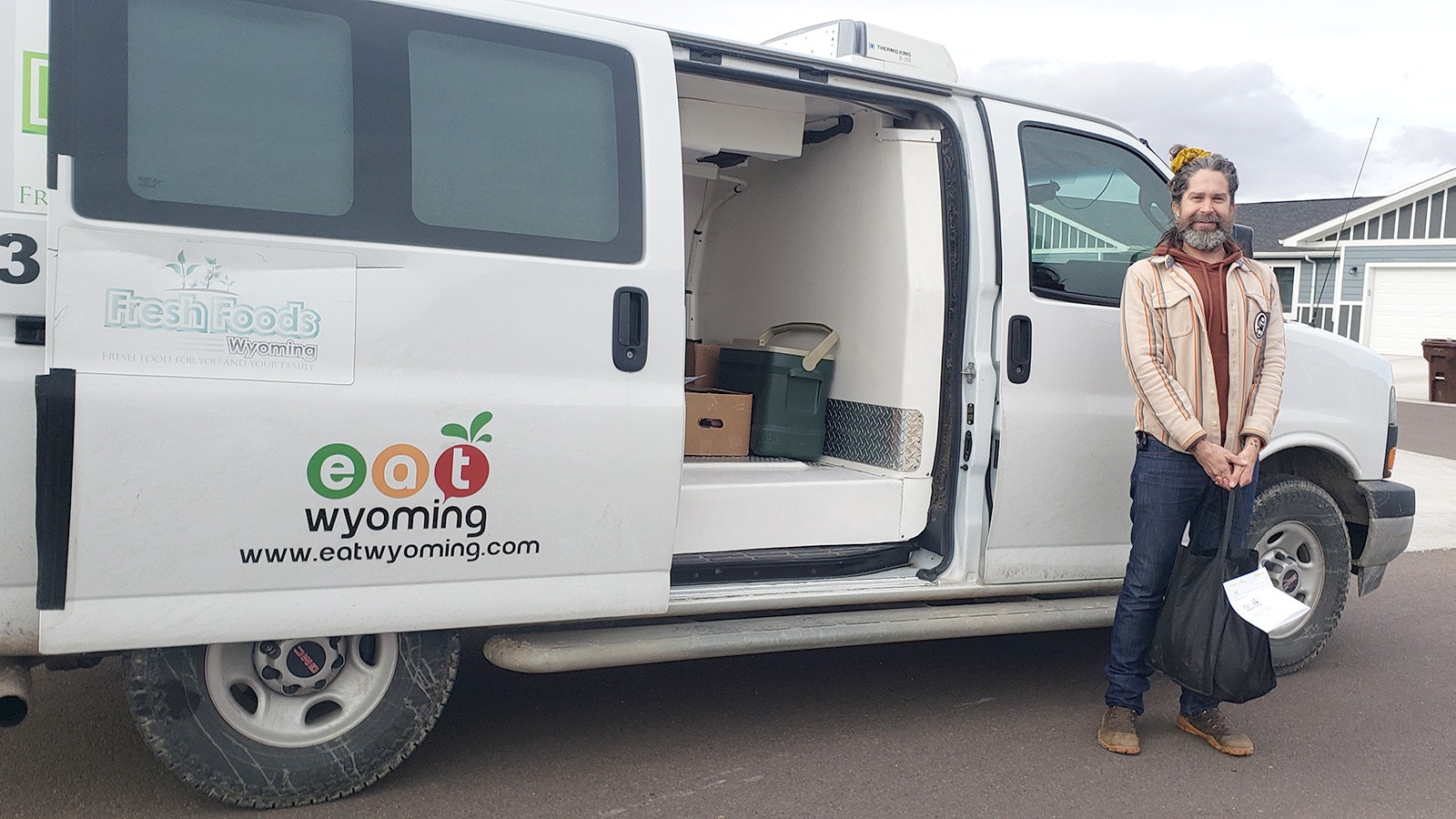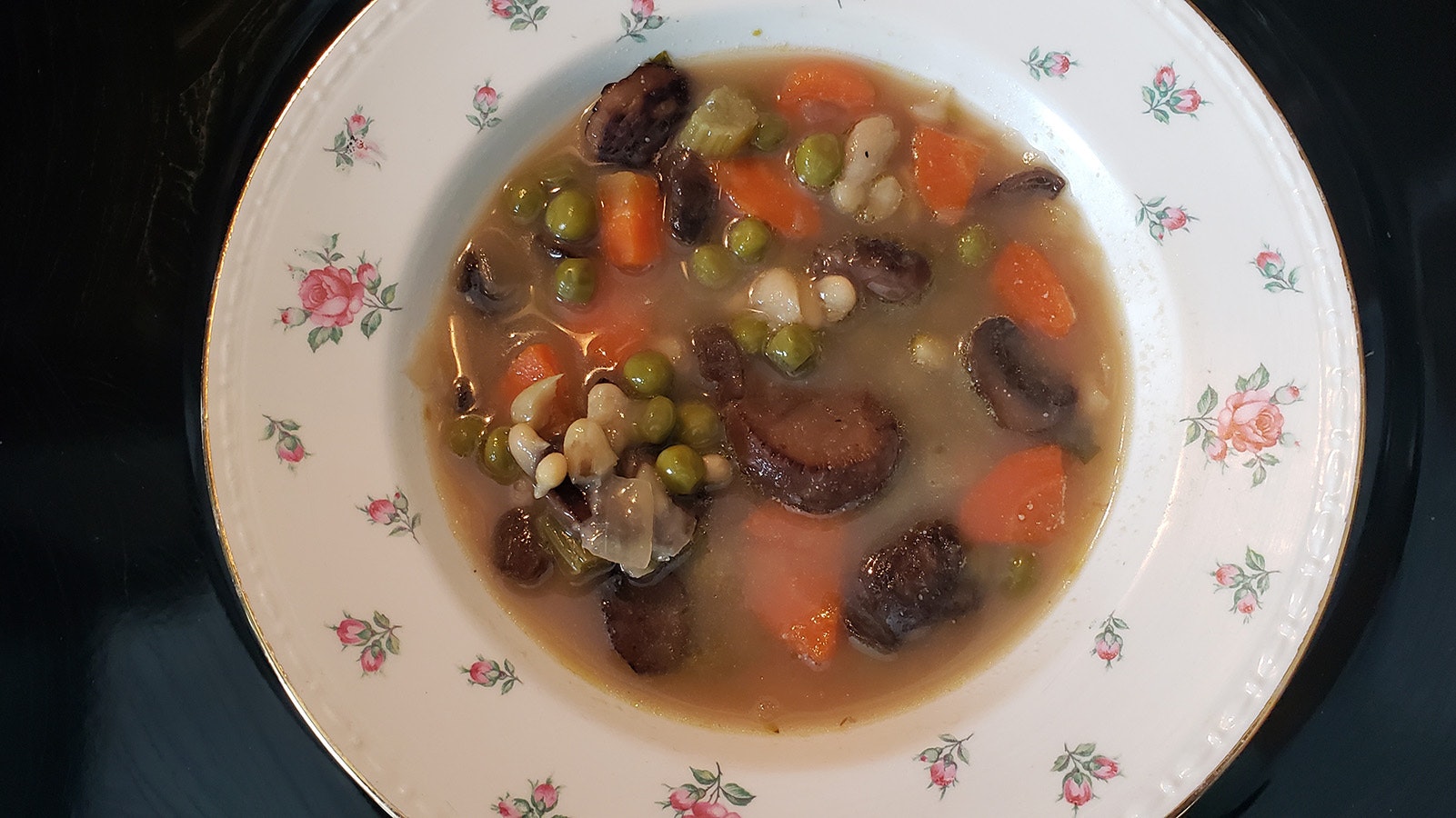Through his studies, Dr. Jesse Miller of Casper knew that vegetables that are truly fresh — as opposed to induced freshness that’s common in modern-day supermarkets — are a powerful force for health. But the doctor was finding it hard to practice what he wanted to preach in Wyoming.
“A lot of our fresh produce that gets shipped in, particularly like lettuces and stuff like that, the water-soluble vitamins actually evaporate during the transport process, so they become less nutritionally valuable,” he told Cowboy State Daily. “The more transport that occurs — and they’re actually getting picked earlier and gassed to make them look right — but they’re not really right.”
Produce picked and delivered at peak freshness — like a gardener does in his home garden — is what gives the most health bang per bite, and that’s what Miller wanted to put on his own dinner plate.
That led him to do some soul-searching across the Cowboy State, not just for locally grown foods, but a logistical method to bring those foods to Wyoming dinner plates in ways that preserve not just those valuable nutrients, but the flavor that often comes with them.
At first, it seemed Miller was at an impasse.
“There was this kind of assumption that we heard around Wyoming, ‘Oh, things don’t grow here,’” Miller said. “We don’t have access to a lot of (fresh-grown) foods.”
But Miller dug a little deeper and began to find farmers with small, 5-acre farms or smaller who were growing plenty of produce, and all kinds of it.
“They were growing squashes and tomatoes and peppers and, you know, broccoli, cantaloupe, cabbage, watermelons — all of these things that were just amazing and that we were so surprised about,” Miller said.
So Miller felt emboldened to start something to would turn around the myth that Wyoming can’t grow vegetables. That’s how the virtual farmer’s market known as Eat Wyoming came to be.
A Simple Idea With Complicated Logistics
The idea behind Eat Wyoming sounds deceptively simple — build a bridge between Wyoming producers and consumers who want to fill their plates with fresh food from Cowboy State producers.
That’s where all the simplicity ends.
Behind the scenes, there’s a logistical juggling act going on that would make Ringling Bros. proud.
That juggler is LeAnn Miller. She is Jesse’s mom, but most know her as Wyoming’s “Veggie Lady.”
She’s made it a mission to find every Wyoming producer possible and get them into the Wyoming Eats family so their produce can make it to a Wyomingite’s plate within days, and sometimes even within hours, of being picked.
“People outside our area are always asking how many socially disadvantaged and small farmers do I support,” LeAnn told Cowboy State Daily. “And I have to giggle, because all of my vegetable and other producers are on 5 acres or less. There are no large vegetable farms in here.”
There might be one large operation in the future, LeAnn added. She’s been working with a pinto bean grower, but by and large all of the Eat Wyoming growers would be considered much too small for a modern produce distribution center.
And LeAnn is fine with that, because the modern distribution system isn’t delivering the high-quality nutrition and fresh taste that she and her son have envisioned for Wyoming plates.
An Army Of Producers
Her success stories are legion. She’s managed to tap a small army of producers more than 100 strong.
There are more than 50 types of herbs from Cheyenne urban gardener Deborah Birchfield, for example, while SonHarvest near Riverton has turned a Wyoming hillside into a raspberry and pumpkin patch that feeds Eat Wyoming’s subscribers.
Blackberries, elderberries, Aronia berries, chokecherries and raspberries are also coming in from Antelope Gap Dream Berries, while A4 Market Gardens in Torrington is growing ground cherries, along with a variety of other produce.
Some of the growers LeAnn works with are year-round, like FarmTableWest, which provides sweet winter carrots, as well as spinach and other produce from greenhouses that keep the veggies coming all winter long. Another year-round grower, Greybull Valley Produce, provides lettuces and herbs using hydroponics.
Those are just a few of Eat Wyoming’s growers and producers — and LeAnn is working every day to source more to grow the network of producers and subscribers.
“For a long time, I did all the driving,” LeAnn told Cowboy State Daily. “And so I would be driving somewhere and I would say, ‘Oh, that looks like a vegetable farm.’ So I would stop and introduce myself, and I would go to town hall meetings that were related to agriculture or to agricultural conferences and things like that.”
Other times, she would just pick up the phone and start calling people to see what they might have that she could add to the Eat Wyoming family.
A Shot In The Cowboy State Arm
But the logistics don’t end with sourcing product. Someone has to also aggregate the produce and then distribute it to Wyoming subscribers. For a long time, that also was LeAnn’s job.
Since the beginning, though, the service has grown in popularity, and the L3C company has been able to hire additional employees.
“We have drivers now,” LeAnn said. “And we have office IT check people, which is great.”
The company’s status as an L3C, meanwhile, is something else that makes this particular business unique.
“We’re not a full nonprofit,” LeAnn told Cowboy state Daily. “We’re a for-profit entity with a social mission. In other words, in the eyes of the IRS our social mission is our priority, as opposed to high profits. That helps us keep our prices low for our consumers.”
Having a price point that’s competitive with grocery store produce is a key selling point for the service, so that people will want to get veggie boxes on a regular basis, rather than just every once in a while.
“Obviously, we have to cover the costs of our operation,” LeAnn said. “But really what we’re trying to do is help our economy grow across the state by helping our producers grow.”
That has meant, in some cases, delivering some finished products, like Red Pony salsa, on a more wholesale basis. Getting more value-added products, where homegrown Wyoming produce is turned into a finished product has become another of Eat Wyoming’s goals.
Small Beginnings, Big Dreams
In the beginning, Jesse’s idea started with just 10 people in the Casper area.
He and LeAnn had found the Lloyd Craft CSA in Worland and made a deal with them to buy a set amount of produce each growing season.
CSA stands for community-supported agriculture, a business model where members by a share of a farm’s harvest in advance. Members are also often responsible for helping during the growing season in some fashion as well.
“We would actually drive up there and we would fill up the back of my little car, and we would drag it back down here to Casper,” Jesse said. “And then we would share that with people who were working with us.”
Jesse is pleasantly surprised with how much his idea has grown, from that one little connection between Worland and Casper to producers in towns across the Cowboy State, as well as subscribers in just about every corner of Wyoming.
He credits some of the success to Wyoming’s Food Freedom Act, which has made it more possible for small producers to create unique food products ranging from jams and salsa to sausages and more. That adds to the slate of attractive and deliciously unique options the service can offer, things that now can’t generally be found in a supermarket.
There’s also been a snowball effect as more and more producers learn there’s a ready and waiting outlet for the stuff they are growing, even if the amount they’re producing isn’t huge.
All that success has led to the purchase of a refrigerated truck to take produce across the state, as well as the start of a logistics company called Fresh Foods Wyoming.
It’s also led to a new and even bigger dream. Someday, Miller would love to see similar networks in other states.
But for now, he’s totally focused on reaching every corner of Wyoming with fresh veggie boxes and other value-added food products.
“I did not think we would get so big, you know,” Jesse told Cowboy State Daily. “But it’s all grown out of a kind of homegrown need. We wanted good, healthy produce. I wanted to eat healthy, and, you know, my parents had some health issues that we talked about, and it was just like, hey how do we get healthier?
“It was kind of self-serving because we wanted to be able to eat good food.”
Renée Jean can be reached at renee@cowboystatedaily.com.















